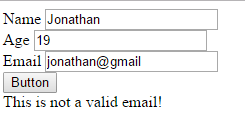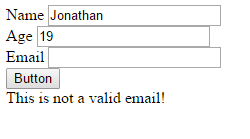How do you validate inputs?
Are you still writing tons of if-else condition for validation?
Now its time to go forward!
Fluent Validation
Validation has never been easier!
Installation with NuGet
Install-Package FluentValidation -Version 6.2.1
Lets create class for your object
public class Employee
{
public string Name { get; set; }
public int Age { get; set; }
public string Email { get; set; }
}
Configuring validation
public class EmployeeValidator : AbstractValidator<Employee>
{
public EmployeeValidator()
{
RuleFor(x => x.Age)
.Must(x => x >= 18 && x <= 100)
.WithMessage("Age must be between 18 and 100");
RuleFor(x => x.Name)
.NotEmpty()
.WithMessage("Name cannot be empty");
RuleFor(x => x.Email)
.EmailAddress()
.WithMessage("This is not a valid email!");
}
}
Validation handling
Employee employee = new Employee();
employee.Name = txtName.Text;
employee.Age = Int32.Parse(txtAge.Text);
employee.Email = txtEmail.Text;
EmployeeValidator employeeValidator = new EmployeeValidator();
ValidationResult validationResult = employeeValidator.Validate(employee);
if (!validationResult.IsValid)
{
lblError.Text = string.Empty;
foreach (var error in validationResult.Errors)
{
lblError.Text += error.ErrorMessage + "<br />";
}
}
else
{
lblError.Text = "You are ready to go!";
}
You can download source code from here –> Download





